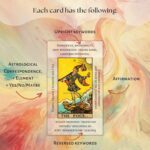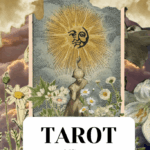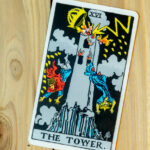In the rich tapestry of tarot, each card serves as a window into the myriad aspects of life, revealing insights that often elude the conscious mind. Tarot Card Number 5, a harbinger of change and transformation, beckons us to engage with its profound symbolism and to understand its intricate nuances.
At its core, the number 5 in tarot invites a shift in perspective. It resonates with themes of conflict, challenge, and growth. This card may evoke feelings of instability, yet it also encourages exploration and discovery, urging us to confront life’s contradictions. The visual imagery typically associated with this card varies, but it often features figures engaged in struggle, representing a precipice of transformation. The scene is charged with intensity, hinting that while tumultuous times may lie ahead, they also pave the way for deeper insights.
Historically, the number 5 is associated with the planet Mercury, which is tied to communication, intellect, and the connection between the emotional and rational realms. This connection implies that the challenges often represented by this card can illuminate new paths for thought and expression. When confronted with the trials indicated by the Five, individuals may find themselves propelled into a crucial phase of their life where introspection is key.
The Five can emerge in various forms, such as the Five of Wands, Five of Cups, Five of Swords, and Five of Pentacles, each offering distinct yet interrelated interpretations. Each iteration compels us to confront our inner turmoil, social dynamics, or material concerns, providing a multifaceted examination of life’s challenges.
Take the Five of Wands, for instance. This card illustrates a competition or disagreement, often manifesting as a playful yet chaotic conflict. While this may seem daunting, it invites those it touches to explore the benefits of collaboration versus confrontation. By embracing alternative viewpoints, a person can unlock novel solutions that flourish within the chaos, essentially redefining their approach to conflict.
On the contrary, the Five of Cups delves into the emotional landscape of loss and disappointment. It depicts an individual mourning spilled cups, symbolizing missed opportunities and grief. The connotation here is not solely negative; rather, it suggests a reevaluation of focus. By turning to the remaining upright cups, one can discover untapped potential and new avenues for joy that had previously been overshadowed by grief. Thus, the metamorphosis promised by this card lies in recognizing that even amidst sorrow, hope remains potent.
The Five of Swords introduces a more combative energy, often accompanied by themes of betrayal and conflict. Here, the exploration extends beyond mere personal discord; it raises questions of ethics, consequences, and the price of victory. This card insists that true triumph does not stem from defeating others but rather from achieving personal integrity in the face of adversity. Those who encounter this card must reflect on their motives and evaluate whether their actions align with their long-term values.
Meanwhile, the Five of Pentacles embodies material loss and insecurity, often portraying individuals facing hardship. However, the transformative essence of this card lies not just in its depiction of struggle but in its call to seek community support. It highlights the paradox that, in facing hardship, we often encounter profound resilience and a chance to forge deeper connections with others. Embracing this can lead to extraordinary personal growth, even amid adversity.
As individuals navigate the complexities represented by the Fives, it becomes clear that introspection is key. The essence of this card compels one to look within and assess the value of personal challenges. This internal dialogue fosters a greater understanding of what drives one’s decisions and reactions amidst external chaos. It is a reminder that every obstacle is a guise for opportunity, and every struggle, a teacher.
The enigmatic nature of the Five can also pique curiosity about the future. How does one’s current predicament shape the horizon of their existence? As this card appears in readings, it encourages querents to consider not merely the present troubles but to envision the potential paths that lay ahead, illuminated by clarity and a newfound understanding.
Moreover, the emphasis on the number 5 aligns with the philosophy of balance in chaos. Life is often characterized by dualities; progress is made through facing both conflict and resolution. By acknowledging and embracing the difficulties suggested by the Five, one opens the door to profound change. The dual nature of the number speaks to the importance of equilibrium—a necessary state for personal evolution.
In conclusion, the exploration of Tarot Card Number 5 serves as a compelling reminder of life’s inherent complexities. It encapsulates transformation by challenging perspectives and inquisitively questioning the status quo. This card unearths the paradox that through conflict and adversity, clarity and opportunity for growth can blossom. The journey invited by the Five is one that promises a rich array of insights and personal evolution, ultimately culminating in a deeper understanding of oneself and the world at large.









Leave a Comment